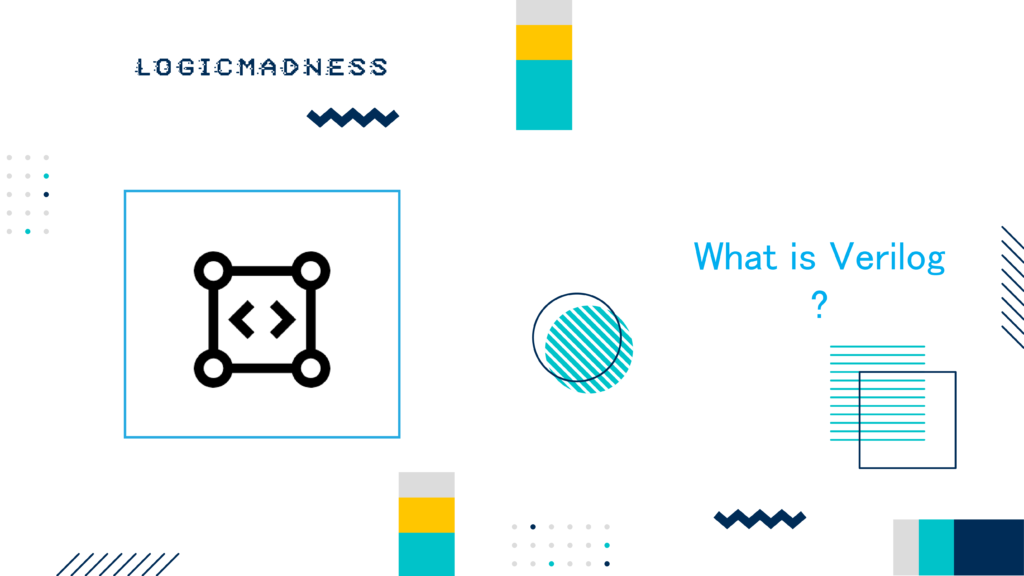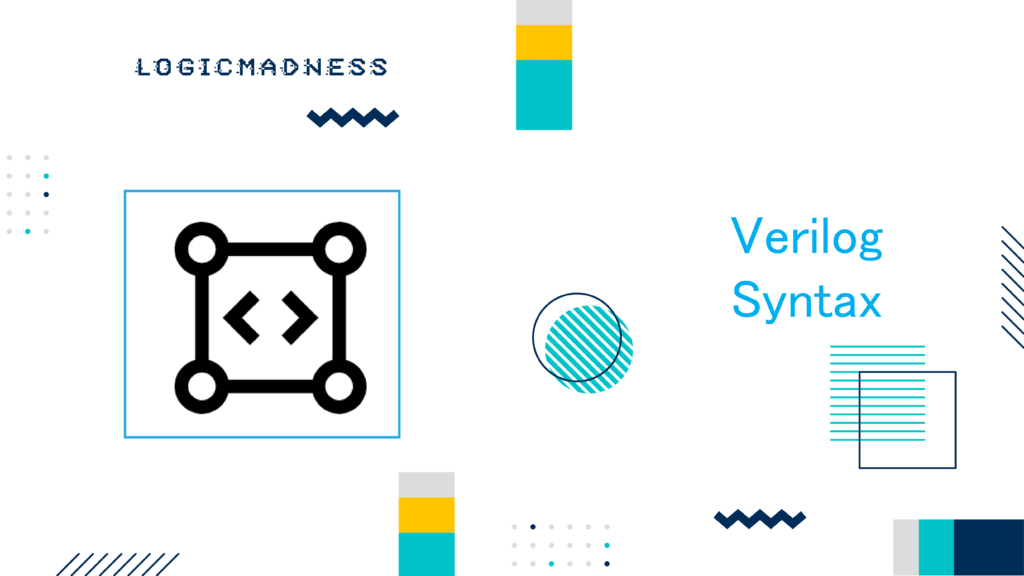Verilog is a hardware description language (HDL) used to model digital circuits. Data types in Verilog define how hardware elements behave, such as flip-flops that store bits or wires that connect components. In this article, we will explain Verilog data types, their usage, and provide practical examples to make it easier for you to understand the basics.
What Values Do Variables Hold?
Verilog variables can hold a limited set of values, each representing a different logic state. These values are crucial for simulating real-world hardware behavior. The four main values are:
| Value | Description | Representation |
|---|---|---|
| 0 | Logic zero (false) | Represents ground (0V) |
| 1 | Logic one (true) | Represents voltage (Vdd) |
| X | Unknown value | Can be either 0 or 1 |
| Z | High-impedance state (disconnected) | Represents an unconnected wire or bus |
These values help Verilog simulate real-world behavior. For example, an unconnected wire in a circuit has a high-impedance state, represented by Z.
What Does the Verilog Value-Set Mean?
Verilog is designed to simulate hardware, so the values directly correspond to physical states:
| Verilog Value | Physical Representation |
|---|---|
| 1 (Logic 1) | Voltage supply (Vdd), typically between 0.8V and 3V |
| 0 (Logic 0) | Ground (0V) |
| X (Unknown) | Unknown state, could be 0 or 1 |
| Z (High Impedance) | Unconnected wire or bus (high-impedance) |
These value mappings allow Verilog to model realistic hardware behavior and simulate scenarios where certain values might be unknown or unconnected.
Nets and Variables
In Verilog, there are two primary categories of data types: Nets and Variables. They serve different purposes and behave differently when assigned and retain values.
Nets
Nets are used to connect components, like logic gates or flip-flops. Nets do not store values; they only pass signals between components. The most common net type in Verilog is wire.
| Net Type | Description | Common Usage |
|---|---|---|
| wire | Used to connect hardware elements. | Connecting gates, flip-flops, and other components |
| vector (wire) | A wire that can carry multiple bits (more than 1). | Used to represent multi-bit signals or buses |
Example:
wire [3:0] net_1; // 4-bit wire, also called a vectorThis example defines a 4-bit wire that can carry 4 separate values, making it a vector.
It is important to note that you cannot redeclare a net with the same name. If you try to declare a net named abc more than once, you will get an error.
Example of Error:
module design;
wire abc;
wire a;
wire b;
wire c;
wire abc; // Error: Identifier "abc" is already declared
endmoduleVariables
In contrast, variables can store values. They are used to model elements like registers or flip-flops, which retain information.
| Variable Type | Description | Common Usage |
|---|---|---|
| reg | Models a storage element (e.g., flip-flop). | Stores values across assignments, used for sequential logic |
| integer | 32-bit signed integer. | General-purpose variables like counters or loop variables |
| time | 64-bit unsigned value for simulation time. | Used for storing time values in simulations |
| real | Floating-point numbers. | Used for representing analog values or fractional times |
Example:
reg data; // 1-bit variableThe reg data type allows you to store a value in a variable, which can represent a flip-flop or even be used in combinational logic.
Other Data Types
Verilog also provides other specialized data types for different purposes:
| Data Type | Size | Description | Example Usage |
|---|---|---|---|
| integer | 32 bits | Stores whole numbers. | integer count; |
| time | 64 bits | Stores simulation time values. | time simulation_time; |
| real | Depends on system | Stores floating-point numbers. | real temperature; |
integer Example:
integer count; // A 32-bit integer variabletime Example:
time simulation_time; // Stores simulation timereal Example:
real temperature; // Stores floating-point valuesVerilog Data Type Example
Let’s see a practical example of using these data types in Verilog. The following example shows how to assign and display values using integer, real, and time variables:
module testbench;
integer int_a; // Integer variable
real real_b; // Real variable
time time_c; // Time variable
initial begin
int_a = 32'hcafe_1234; // Assign an integer value
real_b = 0.1234567; // Assign a floating-point value
#20; // Advance simulation time by 20 units
time_c = $time; // Assign current simulation time
// Display values of all variables
$display ("int_a = 0x%0h", int_a);
$display ("real_b = %0.5f", real_b);
$display ("time_c = %0t", time_c);
end
endmoduleSimulation Log:
ncsim> run
int_a = 0xcafe1234
real_b = 0.12346
time_c = 20
ncsim: *W,RNQUIE: Simulation is complete.In this example, the $display system task prints the values of the integer, real, and time variables. The simulation log shows how the values are assigned and displayed during the simulation.
Verilog Strings
Strings in Verilog are stored using the reg data type. Each character in a string corresponds to an ASCII value that requires 1 byte of storage. If the string is larger than the reg variable, Verilog truncates it. If the reg variable is larger, Verilog pads the string with zeros.
| Reg Width | String Size | Result |
|---|---|---|
reg [8*11:1] | "Hello World" | Can store all 11 bytes |
reg [8*5:1] | "Hello World" | Stores “World” (truncated) |
reg [8*20:1] | "Hello World" | Pads with spaces to 20 bytes |
Example:
reg [8*11:1] str1 = "Hello World"; // Can store the full string
reg [8*5:1] str2 = "Hello World"; // Only stores "World"
reg [8*20:1] str3 = "Hello World"; // Pads with zeros to store " Hello World"Full Example:
module testbench;
reg [8*11:1] str1;
reg [8*5:1] str2;
reg [8*20:1] str3;
initial begin
str1 = "Hello World";
str2 = "Hello World";
str3 = "Hello World";
$display ("str1 = %s", str1); // Displays "Hello World"
$display ("str2 = %s", str2); // Displays "World"
$display ("str3 = %s", str3); // Displays " Hello World"
end
endmoduleSimulation Log:
ncsim> run
str1 = Hello World
str2 = World
str3 =
Hello World
ncsim: *W,RNQUIE: Simulation is complete.Conclusion
Verilog data types are fundamental for hardware modeling, helping you design digital systems efficiently. By understanding and using nets, variables, integers, real numbers, and strings, you can accurately simulate real-world hardware and improve the reliability of your designs. Keep practicing these data types and explore their applications in different scenarios to strengthen your Verilog skills!

